Nanowissenschaftler entwickeln Farben, die die Luft reinigen
Stickoxide, aber auch Keime in der Luft koennen moeglicherweise in Zukunft ohne grossen technischen Aufwand oder Filter unschaedlich gemacht werden.
Jan 19th, 2011
Read more
Stickoxide, aber auch Keime in der Luft koennen moeglicherweise in Zukunft ohne grossen technischen Aufwand oder Filter unschaedlich gemacht werden.
Jan 19th, 2011
Read more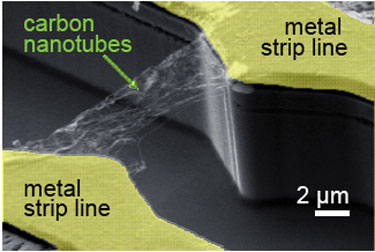 Scientists have found a way to directly measure the time during which photo-excited electrons flow in nanoscale photodetectors.
Scientists have found a way to directly measure the time during which photo-excited electrons flow in nanoscale photodetectors.
Jan 19th, 2011
Read moreResearchers from Duke University Medical Center have identified how nanoparticles from diesel exhaust damage lung airway cells, a finding that could lead to new therapies for people susceptible to airway disease.
Jan 19th, 2011
Read more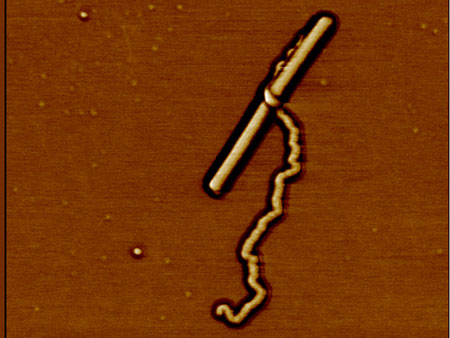 Producing molecules comparable with large bio-molecules in size, shape and structure is an age-old dream of organic chemists. An international research team has now succeeded in synthesising the biggest macromolecule to date.
Producing molecules comparable with large bio-molecules in size, shape and structure is an age-old dream of organic chemists. An international research team has now succeeded in synthesising the biggest macromolecule to date.
Jan 19th, 2011
Read more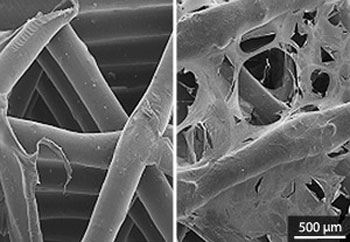 Scaffolds that are able to support stem-cell proliferation and differentiation in culture may not have the same effects in the human body.
Scaffolds that are able to support stem-cell proliferation and differentiation in culture may not have the same effects in the human body.
Jan 19th, 2011
Read more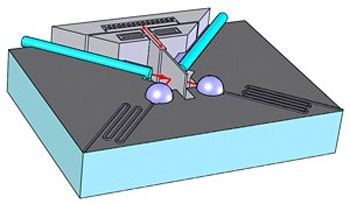 Photonics and microelectromechanical systems fabricated separately on different wafers can now be aligned precisely by finishing with a single processing step.
Photonics and microelectromechanical systems fabricated separately on different wafers can now be aligned precisely by finishing with a single processing step.
Jan 19th, 2011
Read more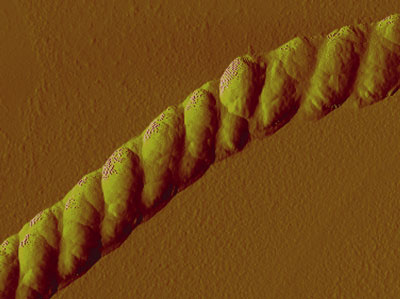 Scientists at the U.S. Department of Energy's Lawrence Berkeley National Laboratory (Berkeley Lab) have coaxed polymers to braid themselves into wispy nanoscale ropes that approach the structural complexity of biological materials.
Scientists at the U.S. Department of Energy's Lawrence Berkeley National Laboratory (Berkeley Lab) have coaxed polymers to braid themselves into wispy nanoscale ropes that approach the structural complexity of biological materials.
Jan 18th, 2011
Read moreCMOS processes currently used to manufacture logic and/ DRAM chips can open a whole new market of smart devices and microsystems. By integrating CMOS chip technology with sensors, actuators, passives, MEMS, optics, etc. smart devices with new functionalities can be developed.
Jan 18th, 2011
Read moreAutomotive, chemical, brick and glass industries could benefit from scientific discovery.
Jan 18th, 2011
Read moreUsing a two-step process that creates gold nanoparticles that look like kernels of popcorn, researchers at Jackson State University have created a targeted nanoparticle that can detect as few as 50 malignant prostate cells and serve as a thermal scalpel that can kill the cells.
Jan 18th, 2011
Read moreScientists have shown that attaching the PHSCN peptide to a spherical polymeric nanoparticle increases the drug's potency by as much as 6,700 fold compared to the free drug in a test designed to measure breast cancer cell invasiveness.
Jan 18th, 2011
Read moreAn international research team from the United States and Italy has shown that it can use a new type of nanoparticle to selectively trap specific families of proteins from blood and protect them from degradation by enzymes in blood.
Jan 18th, 2011
Read moreNano-sized fluorescent particles known as quantum dots have shown promise as powerful imaging agents capable of detecting a wide range of diseases, but these nanoparticles are usually made with toxic metals such as cadmium. Now, researchers at the University of Buffalo have developed a novel synthetic method that enables them to design and create biocompatible fluorescent nanocrystals made of non-toxic silicon.
Jan 18th, 2011
Read moreScientists commandeer a freely moving organism's nervous system without wires or electrodes.
Jan 18th, 2011
Read more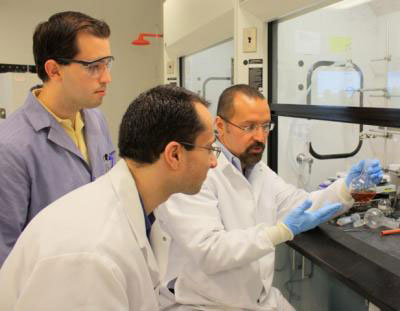 A complex sugar may someday become one of the most effective weapons to stop the spread of cholera, a disease that has claimed thousands of lives in Haiti since the devastating earthquake last year.
A complex sugar may someday become one of the most effective weapons to stop the spread of cholera, a disease that has claimed thousands of lives in Haiti since the devastating earthquake last year.
Jan 18th, 2011
Read more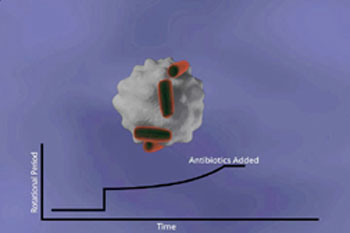 With an invention that can be made from some of the same parts used in CD players, University of Michigan researchers have developed a way to measure the growth and drug susceptibility of individual bacterial cells without the use of a microscope.
With an invention that can be made from some of the same parts used in CD players, University of Michigan researchers have developed a way to measure the growth and drug susceptibility of individual bacterial cells without the use of a microscope.
Jan 18th, 2011
Read more